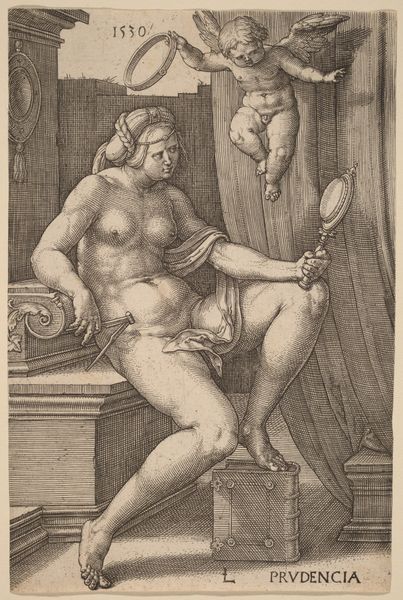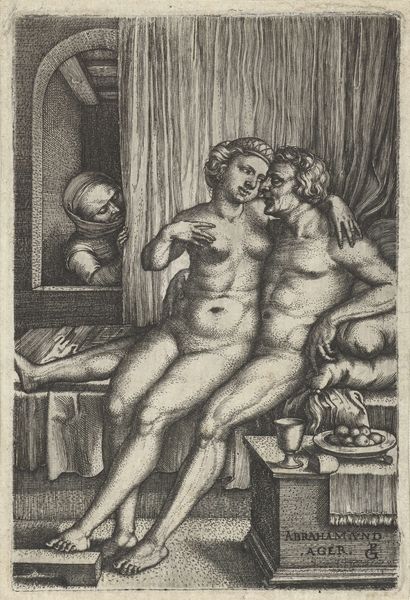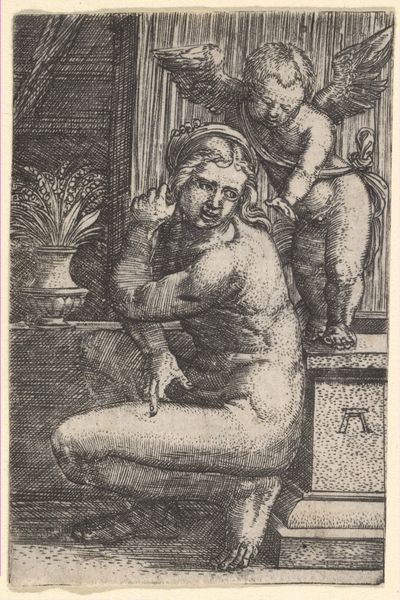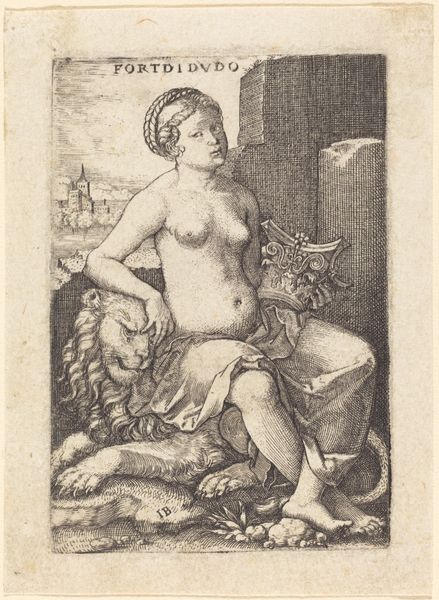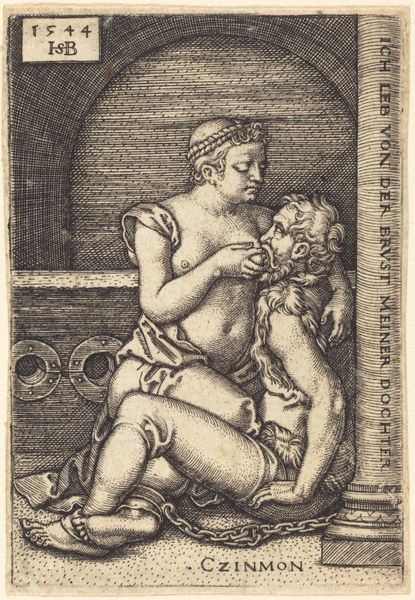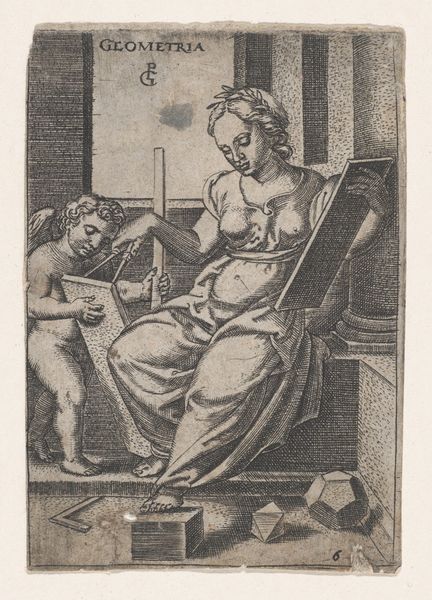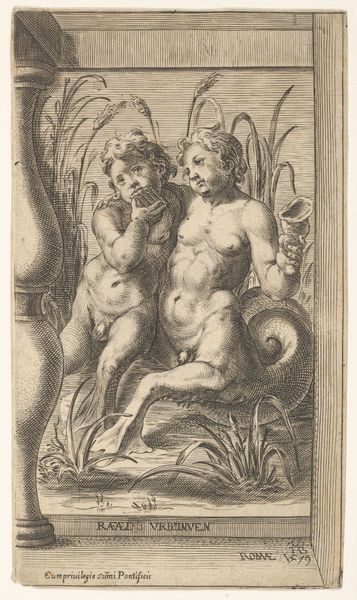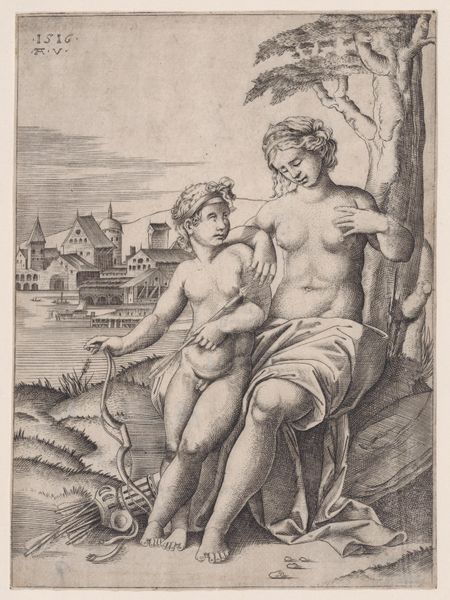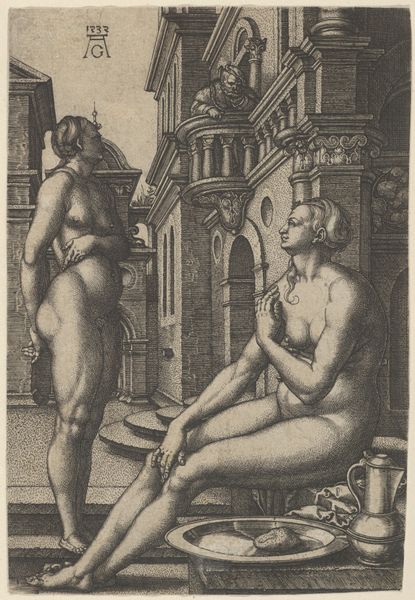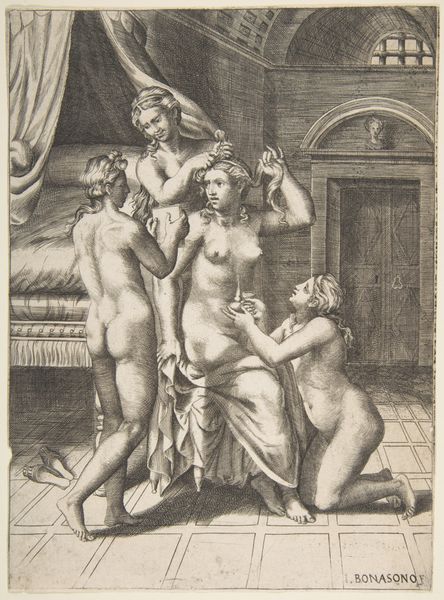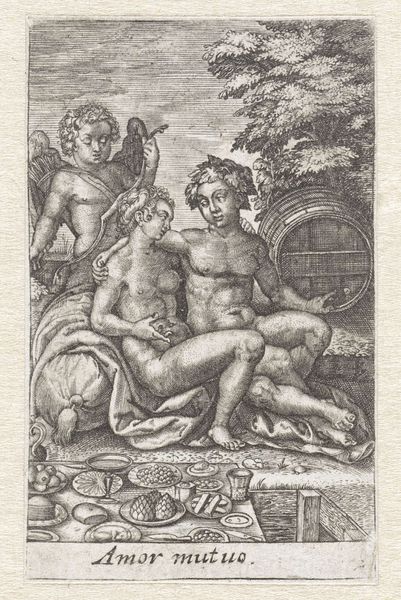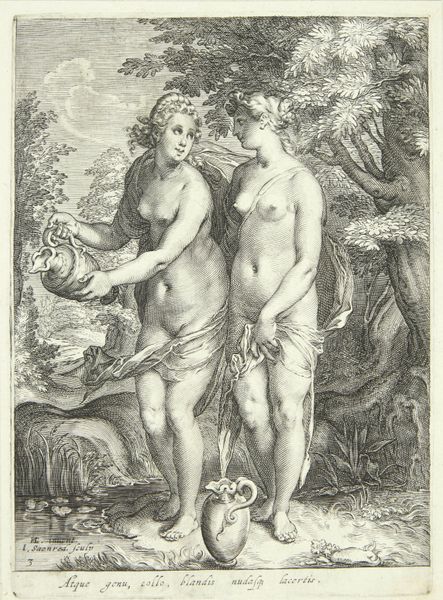
drawing, print, engraving
#
drawing
#
allegory
# print
#
11_renaissance
#
italian-renaissance
#
nude
#
engraving
Dimensions: 6 7/16 x 4 3/4 in. (16.3 x 12.1 cm)
Copyright: Public Domain
Curator: Ah, yes, "Venus and Eros," a captivating engraving crafted sometime between 1514 and 1536. It currently resides here at The Met. Editor: The detail achieved in this print is astonishing. There's an intriguing tension between the delicate lines used to define form and the overall subdued, almost somber mood of the piece. Curator: Indeed. Note how the composition directs our gaze through a carefully arranged space. The window offering a vista into the landscape and the interplay between the figures dominate the frame. What inferences can we derive from this allegorical subject? Editor: Well, clearly, it’s designed to uphold a certain patriarchal system of vision that prioritizes the male gaze, where even goddesses must acquiesce to conventions of female submissiveness and sexuality for predominantly male viewership. The fact that Venus is seemingly ignoring the landscape in the window to offer a sort of gesture towards the boy only reinforces such interpretations. Curator: You foreground your concerns around visibility well. But shouldn’t we consider also the dynamic balance achieved? Eros, seemingly smaller but very present, rests nestled behind her while a soft, almost familial glance seems to come from his side. Note the detailed textures the anonymous master creates in this intimate setting—a compelling use of the print medium. Editor: The figures are certainly presented skillfully. But look how Eros' arrows and bow are cast aside near his feet. The message this artwork delivers must have been shaped and impacted by both patronage demands, alongside political motivations within the community in which the artist moved. Consider how such classical subjects are enmeshed within political contexts. Curator: True, it is necessary to contextualize such creative activities when aiming at making an aesthetic experience. Nevertheless, might we consider these iconographic gestures also as attempts at imbuing beauty and love with more concrete symbols of power and ability? Editor: Undoubtedly, yes. However, these figures weren't merely aesthetic expressions. To understand art and history necessitates to understand the context in which images circulated within specific institutions of society, such as family, marriage, and systems of social class. Curator: Your analysis has opened my mind in several novel avenues, thank you! I suppose, in the end, studying "Venus and Eros" involves interpreting artistic skills as much as understanding a moment and its shifting principles and powers.
Comments
No comments
Be the first to comment and join the conversation on the ultimate creative platform.
